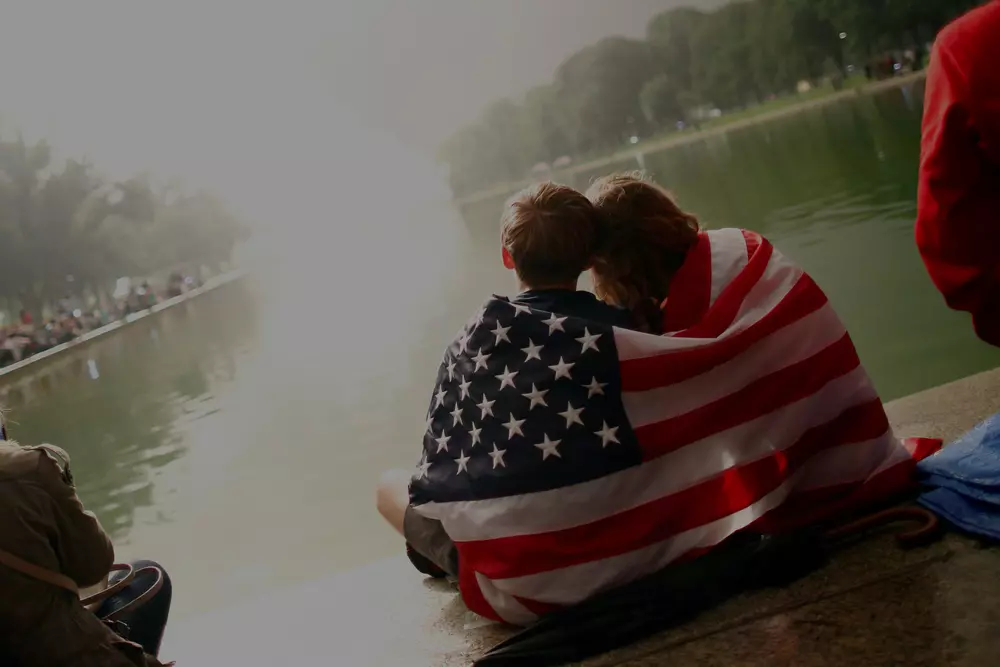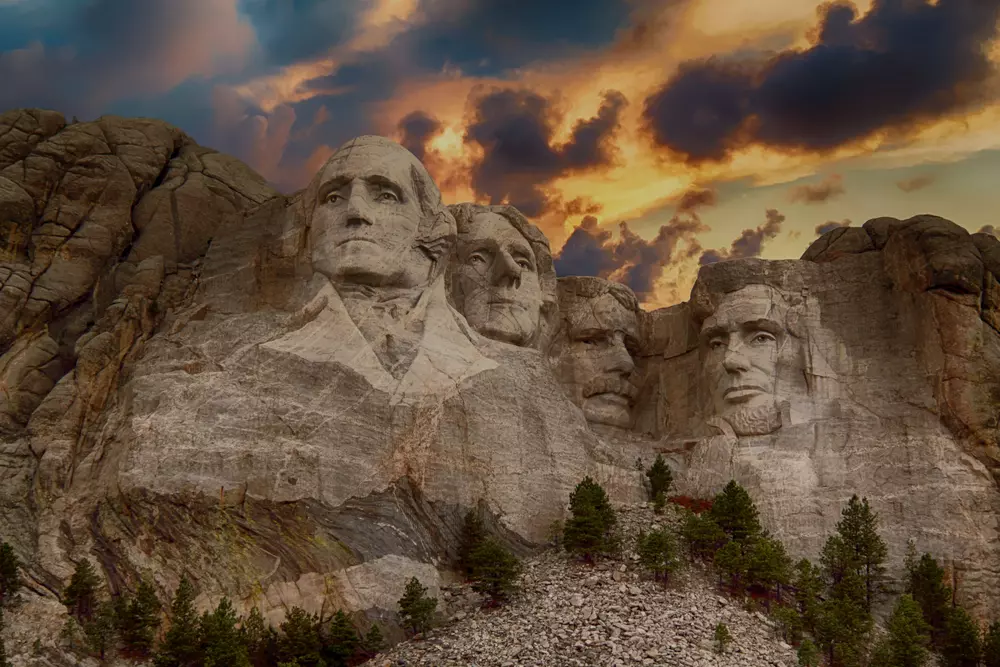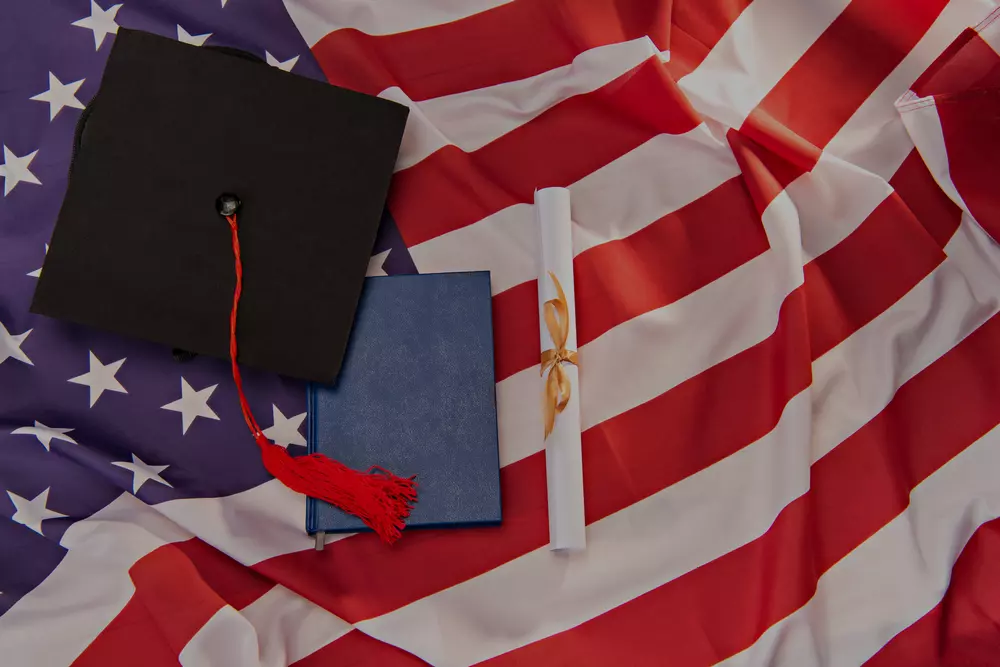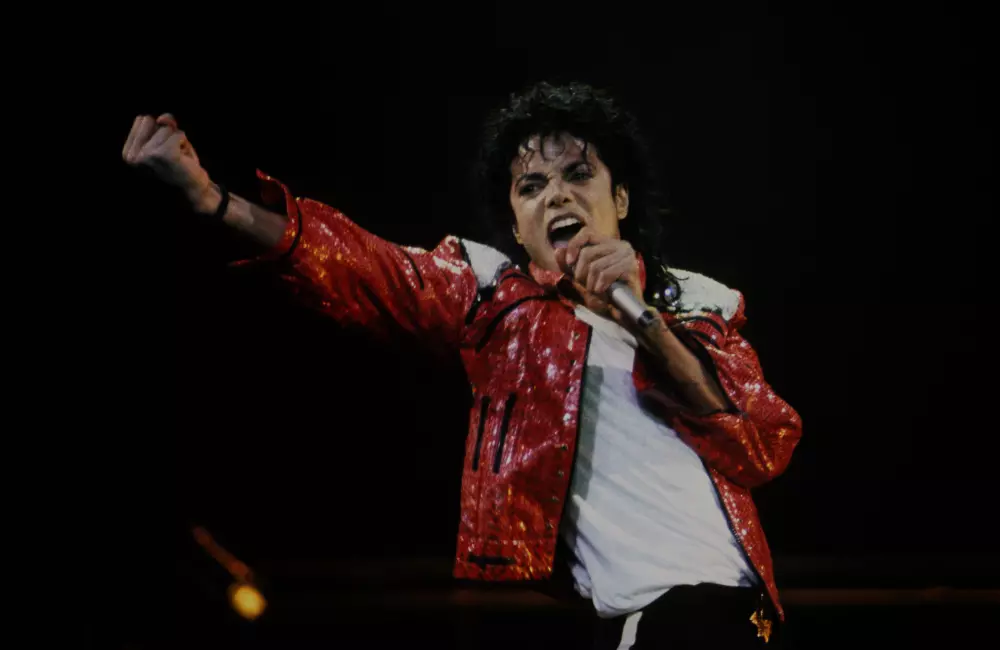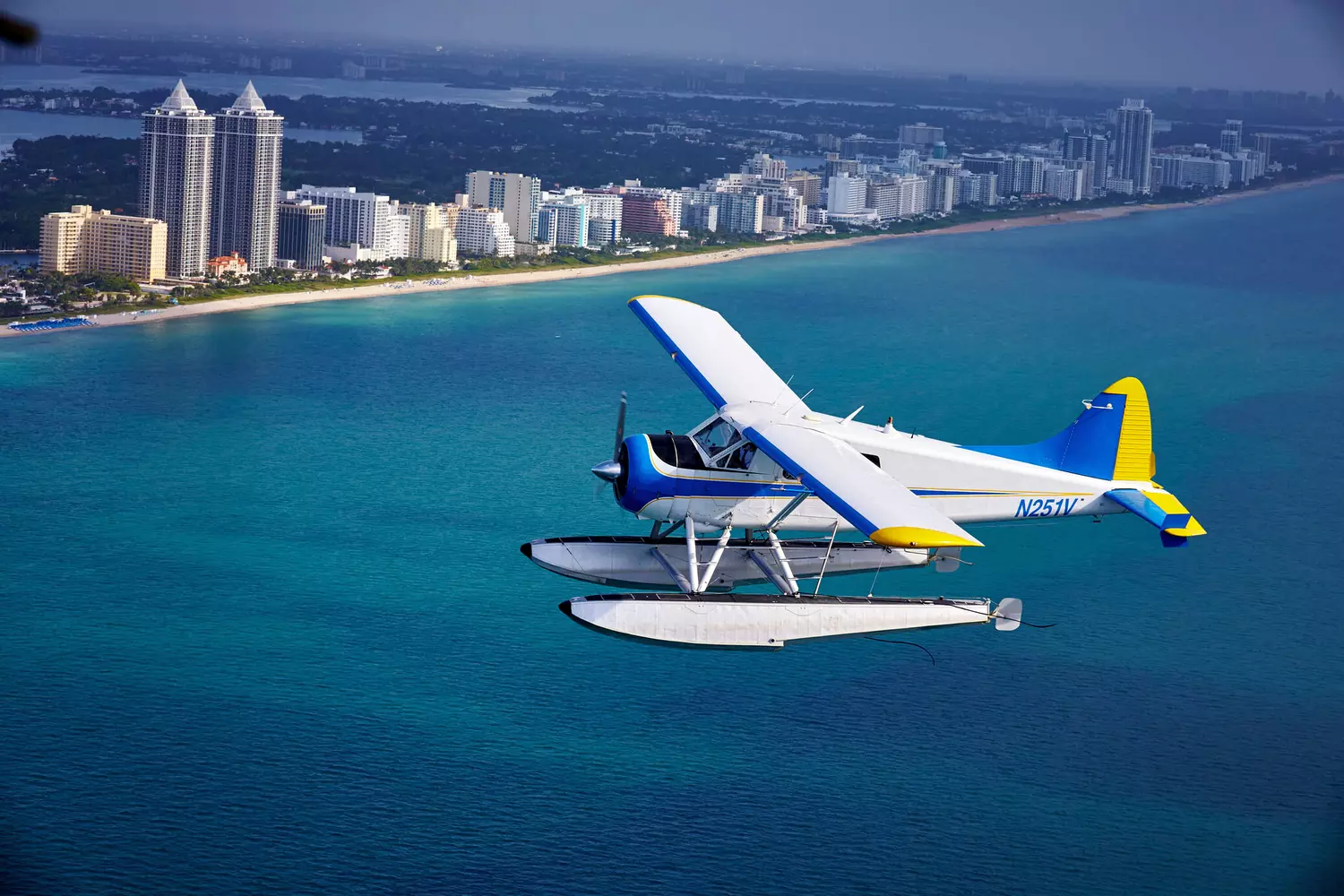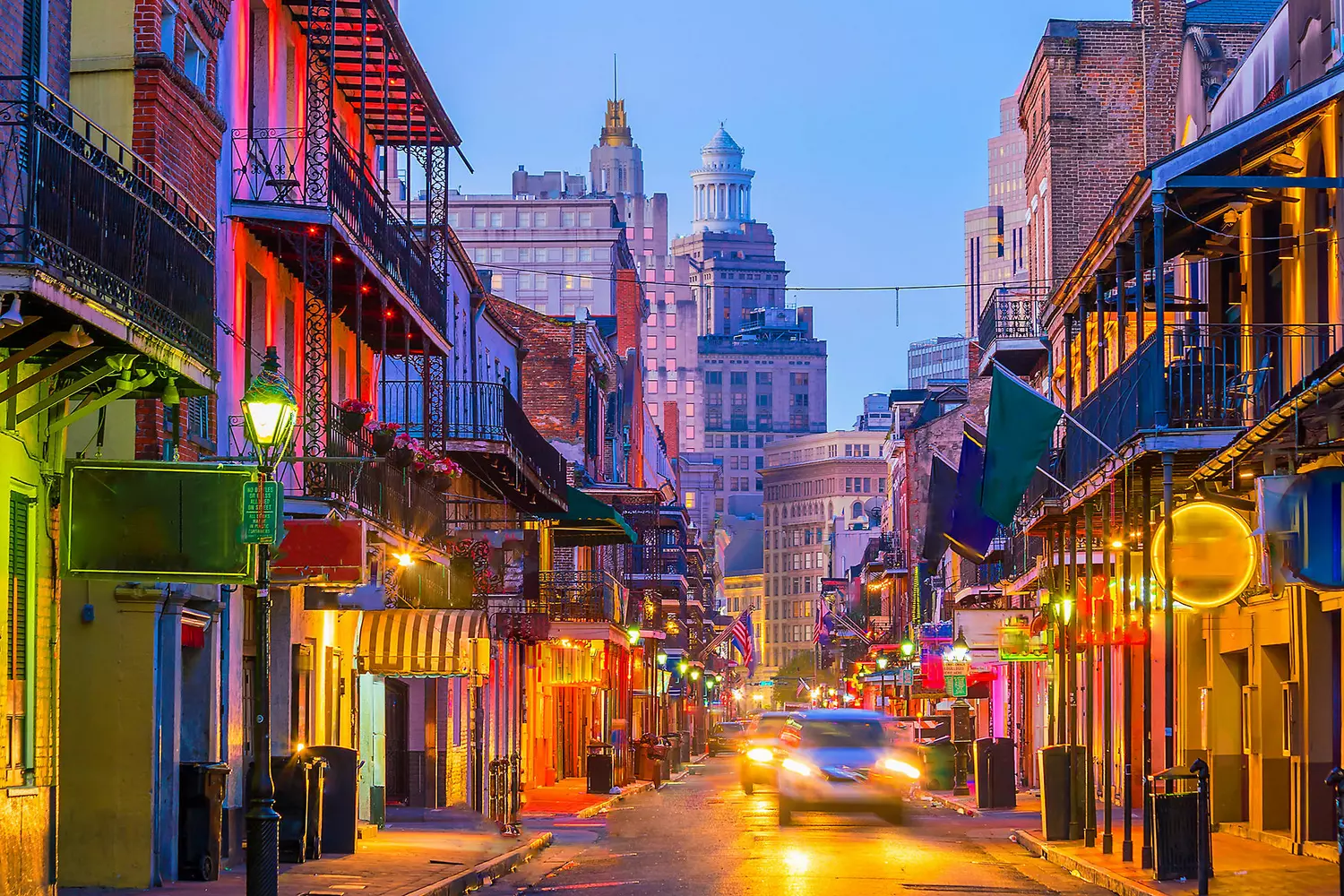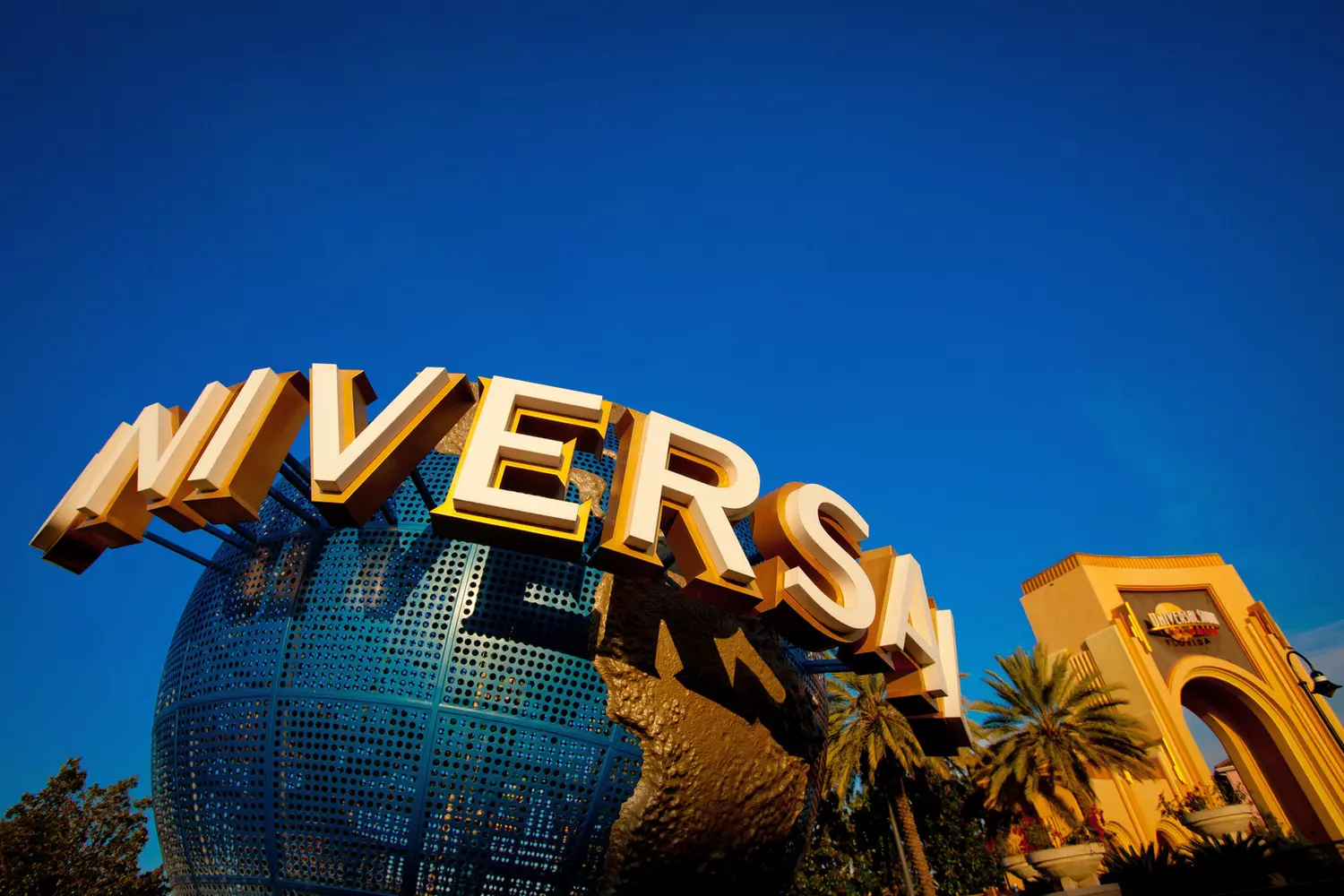The U.S. Military: How the Most Complex 'Machine' on the Planet Works
Explore the structure of the U.S. military — its composition, personnel numbers, budget, special forces roles, and main tasks. Learn how service members serve, what the organizational structure looks like, and what sets the U.S. military apart today.
Everyone has heard of the U.S. Army. Even those who have never been interested in military history or politics are likely familiar with the Navy SEALs, Delta Force, missions in Afghanistan and Iraq, aircraft carriers patrolling the coasts of various countries, and a colossal budget that exceeds the combined expenditures of most nations. The image of the American soldier has long become an integral part of popular culture: from heroic World War II films to Hollywood action movies where elite units carry out "impossible missions".
But the U.S. Army is much more than the acronyms of special units and numbers in the defense budget. It is a mirror of American society and, at the same time, a powerful instrument of foreign policy. For some, it symbolizes national pride and strength; for others, it is an object of criticism and debate. Some see it as a defender of democracy, others as a tool of influence and control. And within this contradiction lies its uniqueness: the U.S. Army has always been — and continues to be — under the world's watchful eye.
Today's U.S. Army is a complex organism, blending 18th-century traditions with 21st-century technologies. From the first militias of the Revolutionary War to ultramodern space forces, nearly 250 years have passed. Over this time, the Army has grown into the largest military force on the planet, with a history deeply intertwined with the history of America itself.
It has participated in the founding of the nation, played a decisive role in victories over global dictatorships, supported allies, assisted in natural disasters, and has also found itself at the center of controversial wars. Each stage of its development reflected the challenges of its time: the fight for independence, territorial expansion, world wars, the Cold War, the war on terror, and now the struggle for dominance in space and cyberspace.
Why is the U.S. Army so important to the world? The answer is simple: its influence extends far beyond the military sphere. It touches the economy, science, technology, and even culture. For example, the Internet, GPS, and many modern gadgets originated from military developments. Songs about soldiers, parades, and even war memorials have become part of American identity.
That is why, to truly understand America — its politics and character — it is worth looking at its army. Let’s explore: from the first musketeer volunteers to drones, satellites, and the "space forces" of the future.
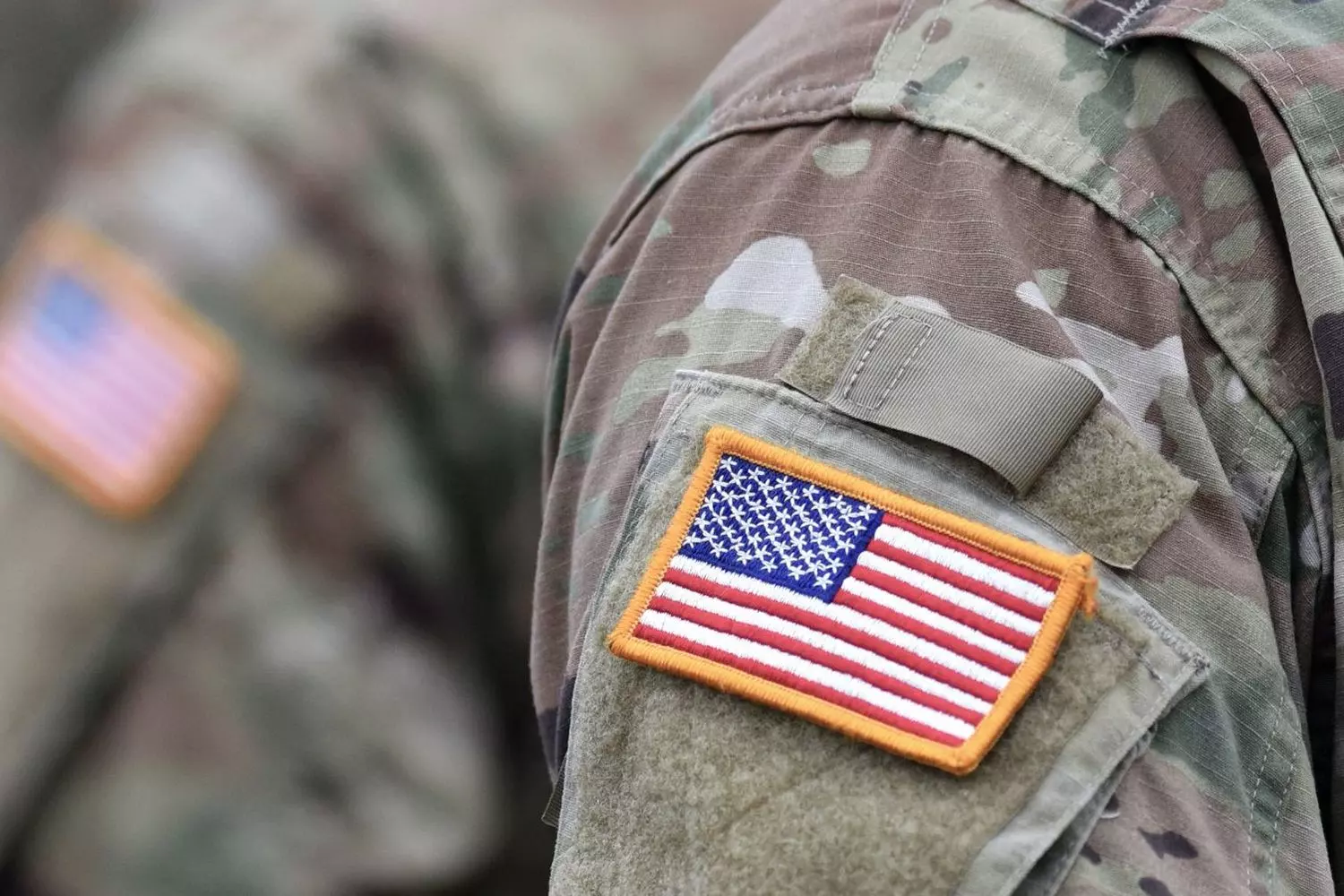
Americans love to fight. All real Americans love the sharp smell of battle.” — General George Patton, on the fighting spirit of American soldiers
From Muskets to Drones: How the U.S. Army Has Evolved Through the Centuries
The history of the U.S. Army began in 1775, a year before the signing of the Declaration of Independence. At that time, 13 American colonies rose up against the British Crown. A militia made up of farmers, craftsmen, and ordinary settlers faced the most powerful army of the 18th century.
To stand against the regular British troops, Congress created the Continental Army and appointed George Washington as its commander-in-chief. Equipment was scarce, many soldiers lacked shoes or uniforms, yet they fought for an idea — for the right to freedom. The winter at Valley Forge became symbolic: exhausted by hunger and cold, many barefoot soldiers endured the harsh conditions.
This episode became legendary, and the Continental Army laid the foundation for the future military machine of the United States.
- 01. 19th Century: Civil War and Expansion
In the 19th century, the U.S. Army faced its greatest test — the Civil War (1861–1865). The North and South fought for the future of the country. For the Army, it was a school of large-scale battles, new technologies, and tremendous losses.
Over four years of combat, more than 600,000 people died — a staggering number that still exceeds U.S. losses in all subsequent wars combined. But this war transformed the Army forever:
- Railroads were used for troop movements;
- Telegraph communications were actively employed;
- The era of mass weapon production began.
After the war, the Army participated in the westward expansion, where its main task was clashes with native tribes. By the end of the century, the U.S. stepped onto the international stage for the first time — the Spanish-American War of 1898 brought overseas territories: the Philippines, Puerto Rico, and Guam.
- 02. 20th Century: World Wars and the Cold War
The 20th century made the U.S. Army a global force.
- World War I (1917–1918)
The U.S. entered the war late, but the “American Expeditionary Forces” helped turn the tide. It was the first time the Army demonstrated its ability to play a decisive role in global conflicts. - World War II (1941–1945)
Over 16 million Americans served in the military. The Army fought in Europe and the Pacific, participated in the Normandy landing, the liberation of France, and the defeat of Japan. Victory established the U.S. as a superpower. - The Cold War (1947–1991)
The Army became a tool to contain the USSR. The U.S. participated in the Korean and Vietnam wars, expanded its nuclear arsenal, and built a global network of bases. Legendary special forces units emerged, and the technological race began.
The Cold War turned the U.S. Army into a "global policeman", with American ships and aircraft becoming a familiar part of international news.
- 03. 21st Century: War on Terror and New Challenges
September 11, 2001, changed everything. After the terrorist attacks on New York and Washington, the U.S. declared a "War on Terror."
- Afghanistan
The first operation against the Taliban and Al-Qaeda. It lasted nearly 20 years, becoming the longest war in U.S. history. - Iraq
In 2003, the operation against Saddam Hussein’s regime began. The war sparked controversy and criticism but also demonstrated the Army’s ability to conduct large-scale campaigns across the globe.
However, the 21st century also brought new challenges: cyberattacks, terrorism, competition with China and Russia, and space exploration. That is why the U.S. is developing cyber forces and space units, drones, satellites, and artificial intelligence.
Today, the U.S. Army combines centuries-old traditions with cutting-edge technology, remaining the world’s largest military force.
Interesting fact: During World War II, the U.S. Army not only fought but also created "fake divisions." Artists and actors trained on inflatable tanks and wooden mock-ups to deceive the enemy. This was one of the first examples of "psychological warfare."
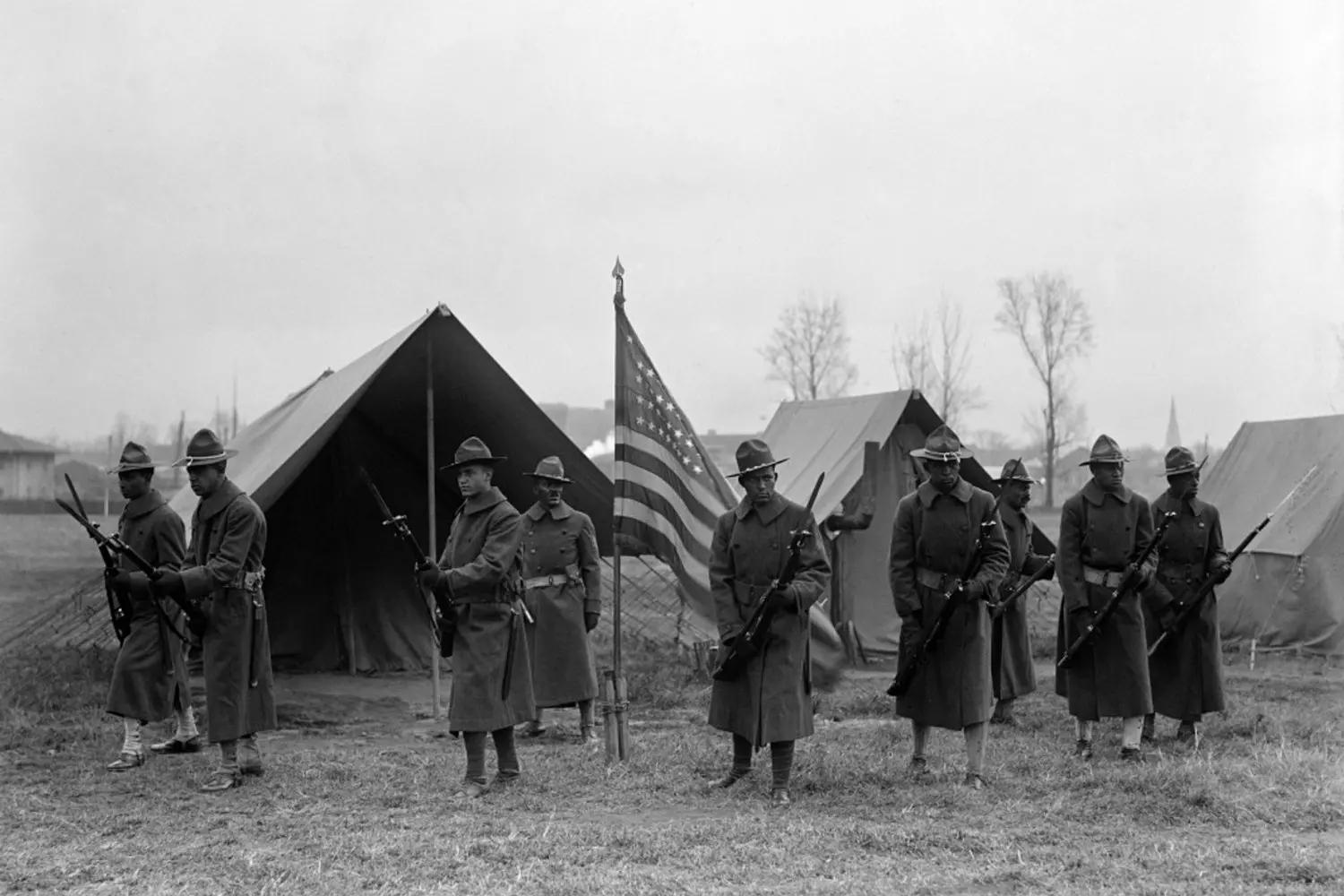
A Powerful Machine: How the United States Armed Forces Are Structured
When we talk about the “U.S. Army,” most people imagine soldiers in camouflage or aircraft carriers patrolling the oceans. But in reality, the American military is a complex, multi-layered system where each branch performs specific functions. You can compare it to a giant organism, where the heart pumps blood, the brain controls movement, and the muscles provide strength. Only instead of blood — there are billions of dollars in budget, instead of muscles — hundreds of thousands of troops, and instead of a brain — a carefully structured chain of command.
The U.S. Armed Forces consist of several key components, each with its own role, character, and even “culture.”
- 01. U.S. Army
This is the backbone and the largest branch of the U.S. military. More than 450,000 people serve in the Army, not counting reservists. Their main tasks are classic: defending territory, conducting ground combat, and participating in overseas operations. Soldiers are trained for a wide range of scenarios — from defense to full-scale offensives.
- Historical example
Army units played a key role in the Normandy landings in 1944, opening the way for the liberation of Europe. - Modern context
In Afghanistan, Army units conducted long-term ground operations in difficult mountainous and desert terrain.
They are trained to be versatile: to defend, attack, and participate in humanitarian missions. In peacetime, they assist during natural disasters and train on everything from Abrams tanks to precision drones.
- 02. U.S. Air Force
If the Army controls the land, the Air Force ensures dominance in the sky and beyond. Their arsenal is impressive: strategic bombers, advanced fighter jets, transport aircraft, and reconnaissance drones. The Air Force is also responsible for part of the country’s nuclear deterrent — intercontinental ballistic missiles and nuclear-capable aircraft.
Interestingly, the Air Force is considered one of the most technologically advanced branches, actively integrating AI systems and autonomous drones.
- Interesting fact
The U.S. has one of the largest fleets of strategic bombers in the world — the B-52, some of which have served for over 60 years and continue to be modernized. - Cultural reference
The movie “Top Gun” turned Air Force and Navy pilots into pop culture icons. The pilot symbolizes American romance with power and risk.
Today, the Air Force isn’t just about fighters and bombers. It also manages space systems: communication, navigation, and reconnaissance satellites.
- 03. U.S. Navy
The Navy is arguably the main symbol of American global power. With over 300 combat ships, including 11 aircraft carriers, it is the largest navy in the world. Each carrier is essentially a floating city, housing up to 6,000 people, with its own hospital, school, airport, and power system.
The Navy not only protects coasts but also serves as a tool of political influence: the arrival of a carrier strike group near any country immediately changes the balance of power internationally.
- Example of influence
When a U.S. carrier group approaches a region, global media immediately speculate about a potential operation. - Fact
The Navy even has nuclear submarines capable of remaining submerged for months, providing nuclear deterrence. - Cultural reference
Films like “The Hunt for Red October” or “Pearl Harbor” turned the U.S. Navy into a symbol of power and drama.
The Navy ensures not only military operations but also the security of maritime trade routes.
- 04. U.S. Marine Corps
Marines are the “strike fist” of the armed forces. Their mission is to be first on the scene in a crisis. They land on shores, seize key positions, and hold them until main forces arrive.
The Marine Corps is known for its unique culture and cohesion. Service here is not just a job, it’s almost a religion. Their motto, Semper Fidelis (“Always Faithful”), symbolizes absolute dedication to duty.
- Fact
Marines were the first to land on Iwo Jima during WWII. The iconic flag-raising photo became legendary. - Modern examples
They took part in the assault on Fallujah in Iraq and in embassy evacuations in crisis zones worldwide. - Cultural reference
The motto Semper Fidelis is more than words. Marines are often depicted in films and series as elite — from Kubrick’s “Full Metal Jacket” to “Generation Kill”.
- 05. U.S. Space Force
The youngest branch, established in 2019. While space was once considered a field of science and exploration, it is now also a battlefield. The Space Force protects U.S. satellites, conducts space reconnaissance, manages GPS navigation systems, and ensures cyber security.
Essentially, it is the military of the future, determining who will control information and communication technologies in the coming decades.
- Tasks
Satellite protection, cyber defense, reconnaissance, and space domain control. Modern internet and GPS depend on them. - Fact
Many Space Force missions are classified, and even experts do not always know what they do, adding an aura of mystery. - Cultural reference
Netflix released a satirical series “Space Force”, reflecting how society perceives the new branch.
- 06. National Guard and Reserves
This is a special component of the armed forces. The National Guard answers both to the federal government and state governors. It is mobilized for natural disasters, civil unrest, epidemics, and other emergencies. When needed, guardsmen can also be deployed overseas — as in Iraq and Afghanistan.
Reservists are military personnel who mostly live civilian lives but undergo regular training and are ready to return to active duty on short notice.
- Examples of deployment
The National Guard assisted during Hurricane Katrina in New Orleans, helped suppress riots after George Floyd’s death, and patrolled Washington D.C. during presidential inaugurations. - Feature
Many reservists balance service with civilian careers. Today they might be a teacher or engineer, and tomorrow, deployed in a conflict zone.
Interesting fact: The U.S. Army has its own system of schools and academies, including the famous West Point Military Academy, which produces future generals and strategists. The army’s symbol — a soldier in green uniform — is more than an image; it embodies resilience and discipline.
The result is a vast yet coordinated system, where every element plays a unique role. It is this combination that makes the U.S. military a tool capable of operating anywhere on the planet — from jungles to orbit.
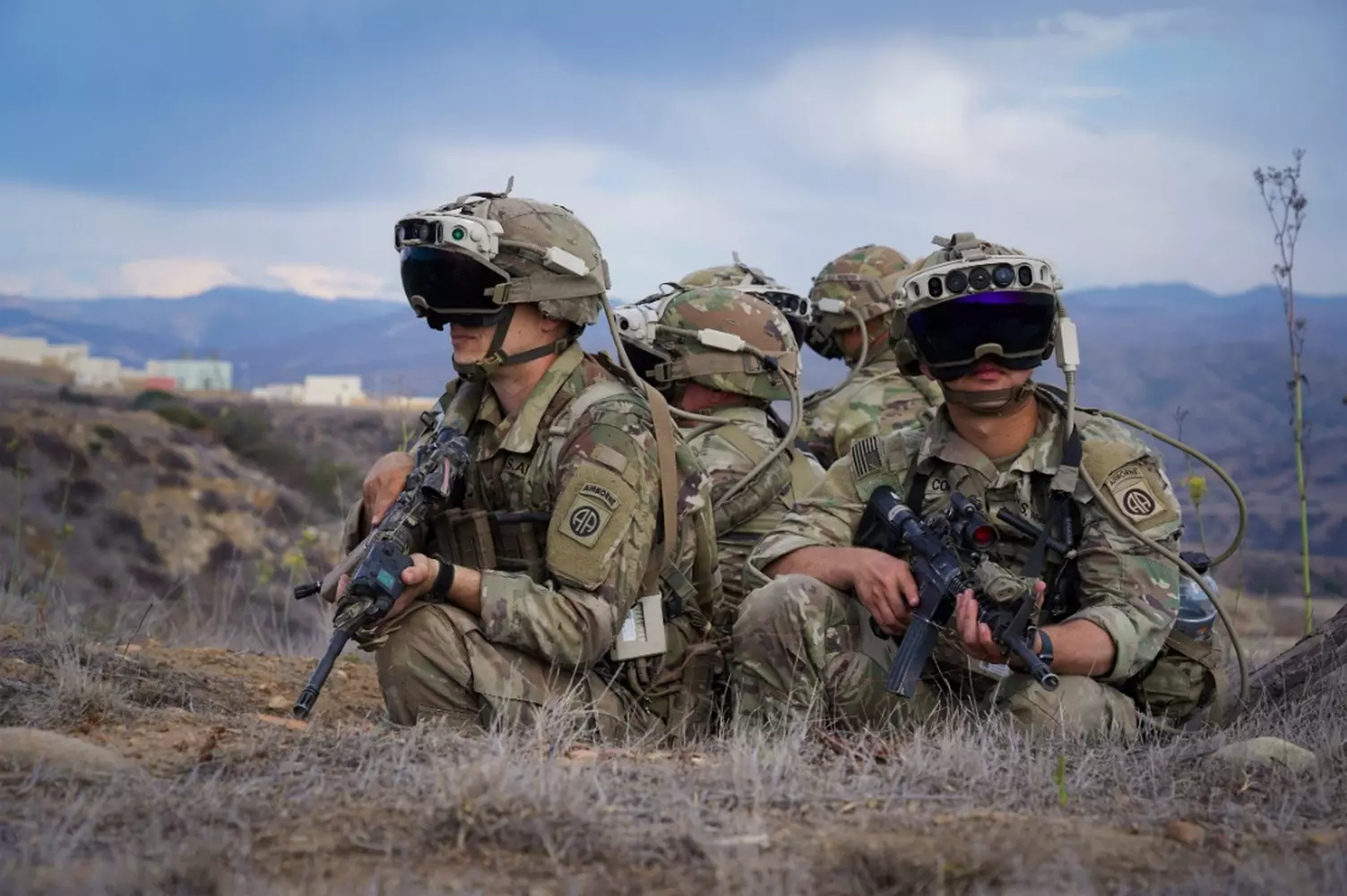
Army of Giants: Size and Budget of the U.S. Armed Forces
When we talk about the U.S. Army, the numbers sound like something out of science fiction. In reality, they are cold statistics that explain why American military forces are considered the most powerful in the world.
- 01. Personnel: strength in numbers
Today, the U.S. Armed Forces include about 1.4 million active-duty personnel. These are soldiers and officers serving daily on bases both within the U.S. and abroad.
But that’s not all. The U.S. also has a reserve force of more than 800,000 people. Many of them are civilian professionals — teachers, engineers, programmers, firefighters — who live ordinary lives during peacetime. But when the alarm sounds, they become part of the combat machine. - 02. Budget: money as a weapon
If the size of the U.S. military is impressive, its budget is staggering. In 2024, the country’s defense spending exceeded $850 billion. For comparison:
- It’s more than the combined defense budgets of the next ten largest countries (including China, Russia, India, Saudi Arabia, and the UK).
- The amount exceeds the annual GDP of countries like Switzerland, Poland, or Sweden.
In other words, the U.S. military budget is equivalent to the economy of a medium-sized nation.
- 03. Where does the money go?
- Military bases worldwide
The U.S. has over 700 facilities in countries ranging from Japan to Germany. This allows rapid response to threats within hours. - Future technologies
Drones, cyber forces, hypersonic weapons, satellite systems — all costing billions but keeping the U.S. Army at the forefront of innovation. - Social benefits
American soldiers receive healthcare, housing, and educational support for their families. This is also part of the budget. - Navy and Air Force
Operating an aircraft carrier costs roughly $6 million per day! And the U.S. has 11 of them.
- 04. Why it matters
The U.S. defense budget isn’t just numbers in congressional reports. It’s a tool of global policy. When the U.S. wants to project power, it can deploy a carrier strike group to the shores of any country or strengthen its presence in a region. Funding keeps this “global network of power” operational.
Fun fact: American media sometimes joke that the Pentagon is the largest corporation in the world because its annual budget exceeds the revenue of Apple or Microsoft.
Personnel and budget are the two pillars that support the power of the U.S. military. These vast resources allow the United States to be not just a country with a strong army, but a global superpower influencing the fate of continents.
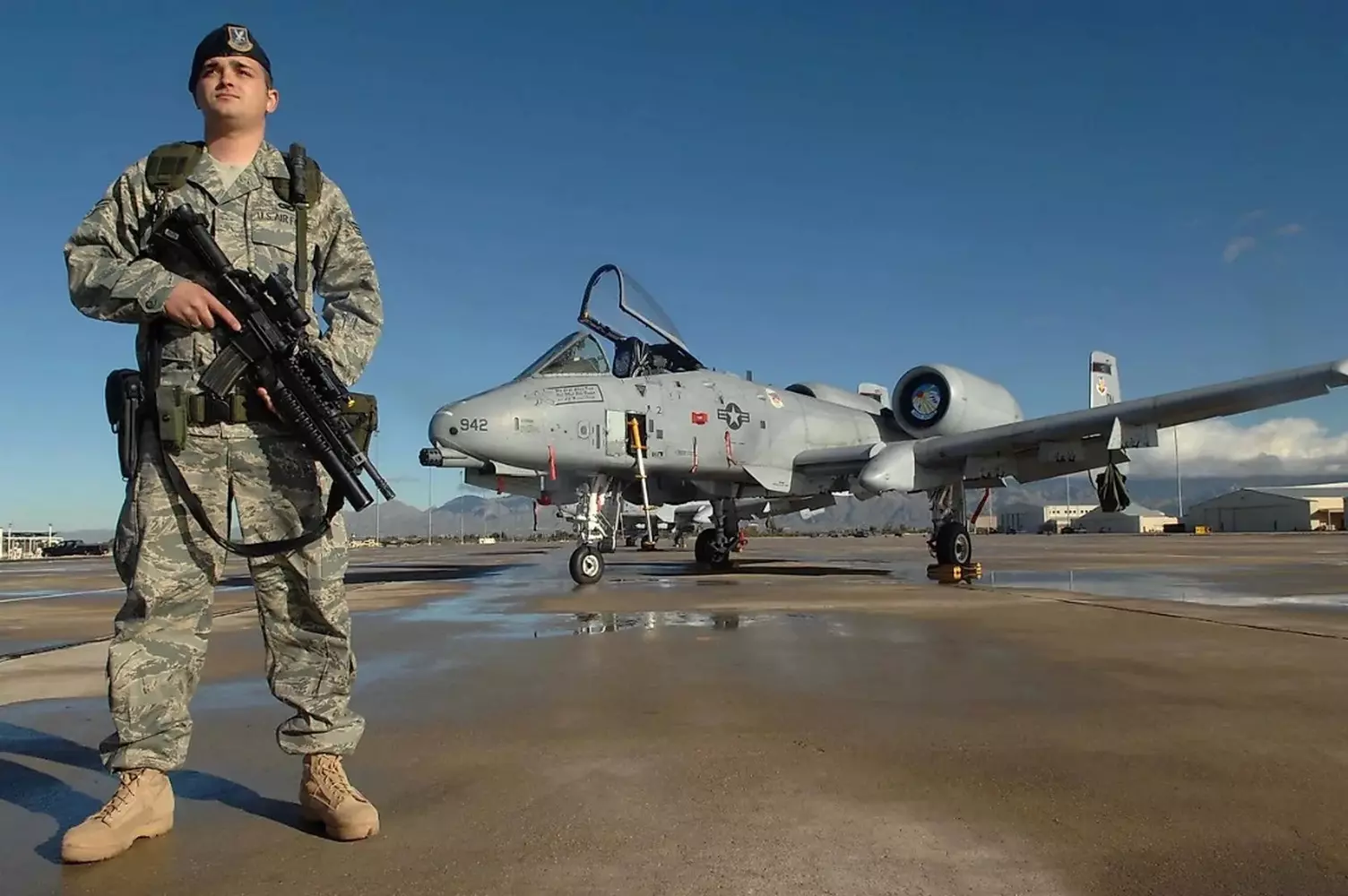
Life Under the Flag: How Service in the U.S. Army Works
Serving in the U.S. military is a choice, not an obligation. Unlike many countries, there is no universal draft. The American armed forces are entirely volunteer-based, which makes them unique among the world’s largest militaries.
- 01. How to join the U.S. military
Not everyone can become a soldier, but the path is achievable:
- U.S. citizens and green card holders are eligible to enlist.
- Service terms usually range from 2 to 6 years, depending on the branch and specialty.
- Before signing a contract, recruits undergo medical exams, physical fitness tests, and aptitude assessments (ASVAB — the test that determines the area where a candidate will perform best).
- 02. Conditions and benefits of service
The U.S. Army is positioned not just as a job but as a social elevator. A contract grants access to a wide range of benefits:
- Free healthcare
For the service member and their family. - Education assistance
The famous GI Bill allows soldiers or veterans to study for free at college or university. - Military pension
After 20 years of service, one can retire with solid benefits. - Family benefits
Access to housing, reduced-interest loans, and discounts at on-base stores. - Travel opportunities
Soldiers can serve abroad — in Germany, Japan, South Korea, or Hawaii. For many, it’s a chance to see the world.
- 03. Soldiers’ stories and prestige culture
Service in the U.S. Army is not only a duty but also an honor. In American culture, military personnel are respected and celebrated, and films and series about soldiers have become a distinct genre. Notable veterans include:
- Elvis Presley
The “King of Rock and Roll” was drafted and served in Germany. His military uniform is still preserved in the Graceland museum. - John F. Kennedy
The future U.S. president served in the Pacific during WWII, commanding a torpedo boat. - Harrison Ford
Started his career as a reservist. - Clint Eastwood
Served in the U.S. Air Force before becoming a Western movie star.
Cultural note: In the U.S., it’s common to thank service members with “Thank you for your service.” Hearing it in a supermarket, cafe, or airport is everyday life.
Interesting fact: Occasionally, foreigners are accepted into the U.S. military through special programs, especially if they speak rare languages or have unique technical skills. Such cases are rare, and rules change regularly.
Serving in the U.S. military is a choice that opens doors to the future. For some, it’s a career; for others, an opportunity for education; for others still, a way to feel part of something larger. But for everyone, it’s a life-changing experience.
On par with men: women in the U.S. military
When thinking about the military, men in uniform with weapons usually come to mind. But in the U.S., women have long been an integral part of the armed forces. Their role grows every year, and today they serve in nearly all branches — from the Army to the Space Force.
- 01. History and evolution
Women have participated in American military conflicts from the earliest times, although officially their service was limited to support roles: nurses, secretaries, and communications operators.
- World War II
Thousands of women served in the Women’s Army Corps (WAC) and WAVES in the Navy, assisting with logistics, communications, and medical support. - 1970s–1980s
Women gained opportunities to serve on combat ships and fly military aircraft, though access to ground combat remained limited. - Today
Women can serve in all military specialties, including elite special forces, fly fighter jets, and operate drones.
In 2015, the U.S. Department of Defense officially lifted all restrictions on women serving in combat roles.
- 02. Roles and achievements
Women in the U.S. military perform many key functions:
- Combat units
Pilots, engineers, artillery personnel, Marines. - Special forces
Several women have successfully completed training in units traditionally considered male-only. - Medical and logistics
Women lead military medical centers, saving lives on the battlefield and in peacetime. - Cyber and intelligence
Women operate drones, analyze intelligence data, and manage cybersecurity.
Cultural note: Films like American Sniper and documentaries highlight that women are now full-fledged heroes of war, not secondary characters.
- 03. Examples of notable women
- Jessica Lynch
An Army nurse who became a symbol of heroism during the Iraq War. - Marina DuPont
One of the first female USAF pilots to fly combat aircraft. - Caitlin Dyer
A Marine who served in Afghanistan and participated in combat operations.
The presence of women in the U.S. military is not just a symbol of equality. It is a strategic asset:
- Diverse perspectives help make more accurate decisions;
- Access to a broader pool of talented specialists increases military effectiveness;
- Social resilience: service members’ families see that the military is open to everyone.
Today, women make up about 16% of active-duty personnel, and this percentage continues to grow. They serve in combat zones, wage cyber warfare, and operate highly advanced technologies.
Women in the U.S. military demonstrate that strength and professionalism are not determined by gender. They make the armed forces more flexible, efficient, and humane, proving that modern military service is a place of opportunity for all.
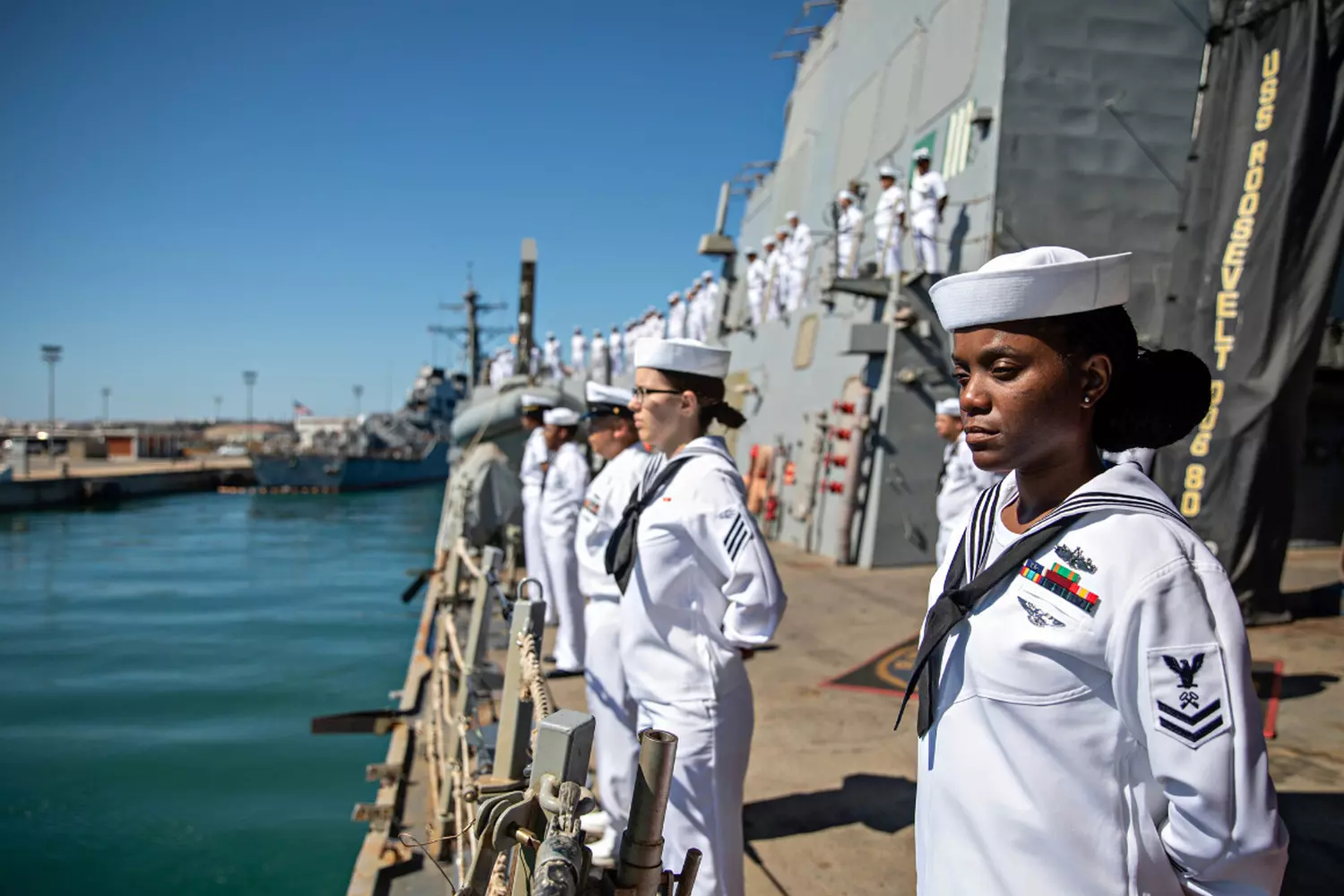
Global Presence: U.S. Military Bases Around the World
The U.S. military is not just soldiers and ships — it’s also a network of military bases that maintain America’s presence in nearly every corner of the globe. Today, there are more than 750 installations in 80 countries, and each base is a miniature representation of U.S. military power, ready to act at a moment’s notice.
Bases are more than just weapons depots. They are fully functioning cities, complete with residential areas, hospitals, schools for service members’ children, training ranges, and airfields. They serve multiple roles simultaneously: defense, strategic deterrence, and rapid response to crises.
- 01. Most notable bases
- Ramstein, Germany
One of the largest and most important U.S. bases in Europe. It hosts NATO’s Air Support Command and a medical evacuation center for service members. Thanks to Ramstein, American aircraft can quickly move across the continent. - Okinawa, Japan
The base on Okinawa Island is a key hub for the Pacific region. Marines and aviation units can respond instantly to any conflict in Asia. The base includes not only military facilities but also schools, stores, and sports complexes — essentially a small American city thousands of miles from home. - Guam, Pacific Ocean
This island serves as a strategic foothold in the heart of the Pacific. Bases on Guam enable control of sea lanes and maintain the presence of American ships and aircraft over a vast area.
- 02. Why bases exist worldwide
- Rapid response
U.S. units can arrive anywhere in the world within hours or days. - Global deterrence
The constant presence of military bases creates leverage and maintains international order according to American strategic logic. - Logistics and support
Bases store strategic reserves of weapons, fuel, food, and equipment. - Training and joint exercises
Military bases are often used for training and joint operations with allies, strengthening international cooperation.
Interesting fact: Some bases, such as those in Germany and Japan, are so large that they include entire residential neighborhoods with shops, cinemas, parks, and medical centers. Essentially, they are American cities embedded in a foreign country.
U.S. military bases are not only a strategic tool but also a symbol of global influence. They enable the American armed forces to operate anywhere in the world, support allies, and be prepared for unforeseen situations.

Shadows and Legends: U.S. Special Forces
When people say “U.S. special forces,” many imagine covert jungle operations, night raids, and elite fighters in black uniforms with advanced weaponry. But behind these images lies years of training, a unique unit culture, and unprecedented effectiveness in accomplishing the most complex missions.
American special forces are not a single unit but a whole system of elite teams, each performing unique missions.
- 01. Navy SEALs
Navy SEALs have become a symbol of fearlessness and covert power. Their mission covers operations in water, on land, and in the air. They can deploy from submarines, helicopters, and airplanes to accomplish the most dangerous tasks.
- Iconic operation
The 2011 raid that eliminated Osama bin Laden, widely recognized as a showcase of SEALs’ skill. - Motto
“The only easy day was yesterday.” This phrase reflects the philosophy of constant self-overcoming and readiness for any challenge.
The selection process for SEALs is extremely rigorous: only a few candidates out of hundreds reach the operational teams. Physical fitness, psychological resilience, and teamwork skills are tested to the extreme.
- 02. Delta Force
Delta Force is one of the most secretive units in the U.S. military. Their missions are almost always classified, with details rarely released to the media. Their main tasks include neutralizing terrorist threats, rescuing hostages, and executing highly complex operations worldwide.
- Unique approach
Delta Force trains soldiers individually, tailoring skills to each operation. The unit’s structure is classified, and recruits undergo psychological testing and training comparable to elite military academies.
Members are known for operating independently without relying on technology or intelligence, using only skill and ingenuity.
- 03. Green Berets
Green Berets specialize in training allied forces, guerrilla warfare, and behind-enemy-lines operations. They not only fight but also train local forces, building networks of support and influence.
- Missions
Afghanistan, Iraq, and Latin America. Green Berets trained local armies and insurgent groups to counter threats and stabilize regions. - Motto
“De Oppresso Liber” (“To Free the Oppressed”), reflecting their mission to support allies and shift the balance of power.
Green Berets often work closely with other special forces, including the CIA and Navy SEALs, forming flexible and effective combat teams.
- 04. Rangers
Rangers are elite infantry specializing in rapid offensive operations, seizing strategic targets, and direct combat.
- Example missions
Operations in Iraq and Afghanistan capturing key sites and rescuing hostages. - Training highlights
Rangers undergo some of the most grueling physical challenges in the U.S. military, including long marches with heavy gear, night exercises, and continuous endurance drills.
Rangers are valued for rapid response, operating in extreme conditions, and accomplishing tasks beyond the capabilities of regular units.
Why U.S. special forces are so effective
- Intense training
Both physical and psychological, designed to maximize stress resilience. - Teamwork
Each operator is trained to function seamlessly with others, across different branches. - Technology and innovation
Special forces actively use drones, night vision, advanced communications, and intelligence tools. - Secrecy and mobility
Units can operate independently in the most dangerous environments.
Interesting fact: Navy SEALs call themselves “sea lions” for a reason: like cats, they move silently and stealthily behind enemy lines, striking suddenly and lethally.
U.S. special forces are not just the elite of the military — they symbolize determination, skill, and unique preparation. Each unit tells a story of courage, discipline, and human resilience, inspiring both military personnel and civilians around the world.
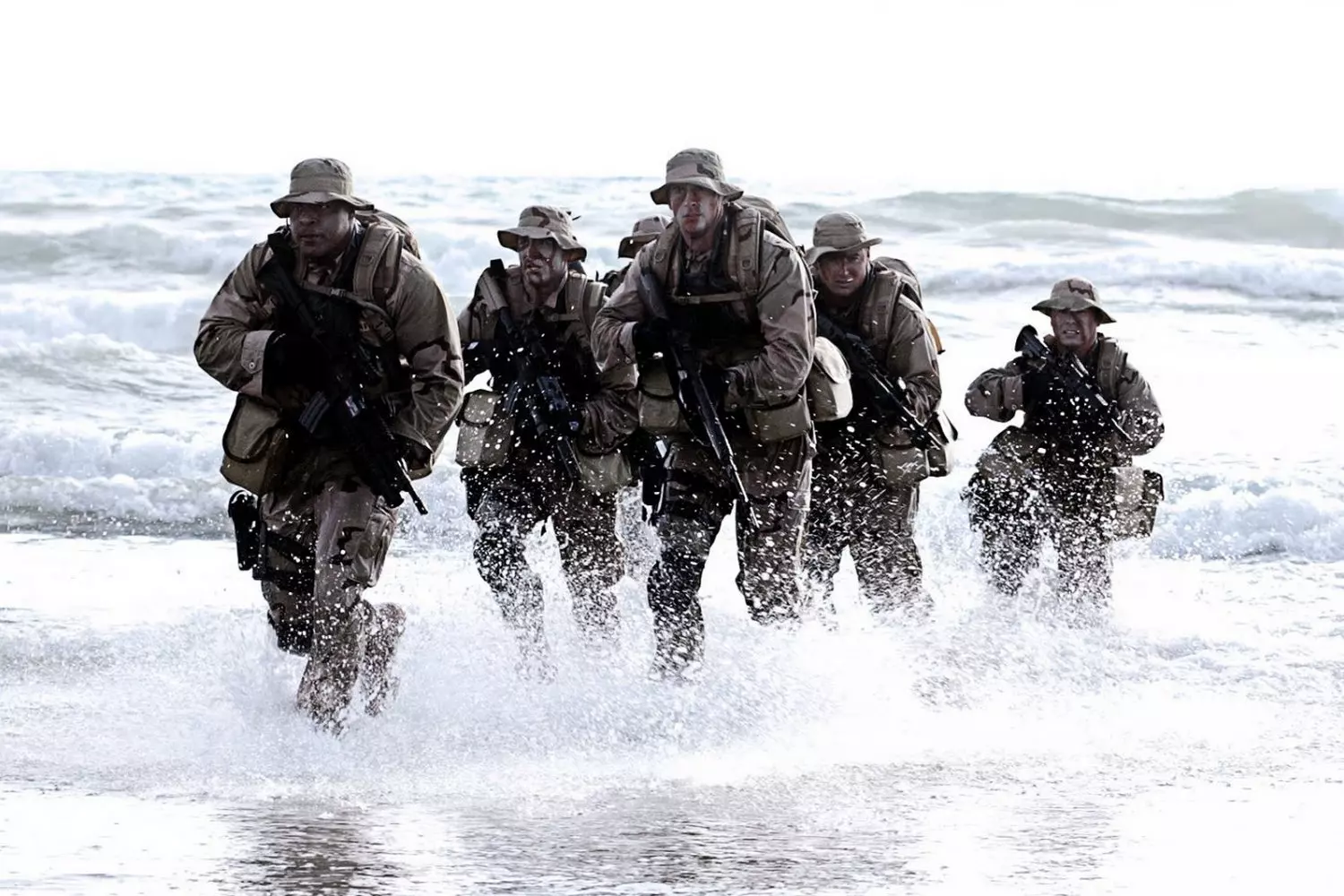
On the Frontlines of History: U.S. Combat Operations from World War II to the Present
The U.S. Army has never been a passive observer in world history. It has participated in key conflicts, shifted the course of events, and shaped international relations. American military operations combine strategy, technology, and human resilience.
- 01. World War II: Building Global Power
The U.S. entered the war in 1941 after the attack on Pearl Harbor. This marked a turning point, rapidly expanding the Army in size and professionalism. Key operations included:
- Normandy, 1944
The D-Day landings in France opened a second front against Nazi Germany. - Pacific Theater
Battles at Iwo Jima and Okinawa, where the Marine Corps demonstrated incredible resilience. These operations showed that the U.S. Army could conduct large-scale offensive and defensive actions simultaneously across two continents.
- 02. The Cold War and Regional Conflicts
After WWII, the U.S. Army focused on strategic confrontation with the USSR, aiming to prevent global war and support allies. Notable operations included:
- Korea (1950–1953)
U.S. forces, alongside the UN, stopped North Korea’s advance, preventing the complete takeover of South Korea. - Vietnam (1965–1975)
Operations aimed at containing communism. The conflict highlighted the limits of military power and the importance of strategy. The Cold War also gave rise to “covert operations”, such as training and supporting allied guerrilla forces through the Green Berets.
- 03. Modern Wars: The War on Terror
Following the September 11, 2001 attacks, the U.S. launched large-scale operations against terrorist networks:
- Afghanistan (2001–2021)
A long-term campaign against the Taliban and Al-Qaeda. Special forces and regular troops worked together, using drones, intelligence, and coordinated offensive operations. - Iraq (2003–2011)
The invasion aimed to topple Saddam Hussein’s regime. The Army employed precision air strikes, the Marine Corps, and special forces to capture key targets. The 2011 mission to eliminate Osama bin Laden exemplified collaboration between Navy SEALs, intelligence, and air power — all conducted in secrecy with minimal casualties.
- 04. Current Missions and Innovation
Today, the U.S. Army participates in peacekeeping and counterterrorism operations worldwide, from Africa to Eastern Europe. Increasingly, operations extend to cyberspace and space, making the modern Army a hybrid force of the future.
- Drones and unmanned systems allow missions without risking soldiers’ lives.
- Cyber units protect critical infrastructure and conduct offensive operations against terrorists and hackers.
- Space Force monitors satellites and intelligence data.
Interesting fact: The U.S. conducts over 10,000 drone missions annually, making it a leader in robotic warfare operations.
U.S. military operations are not only about combat — they are a tool of foreign policy. They enable the country to protect allies, deter threats, and project power without full-scale invasions. Each mission combines strategy, technology, and disciplined personnel.
The U.S. Army demonstrates that modern warfare is not just about weapons or numbers. It is preparation, coordination, innovation, and readiness to act anywhere on the planet. The history of American combat operations is a story of strength, endurance, and strategic thinking that continues to inspire today.
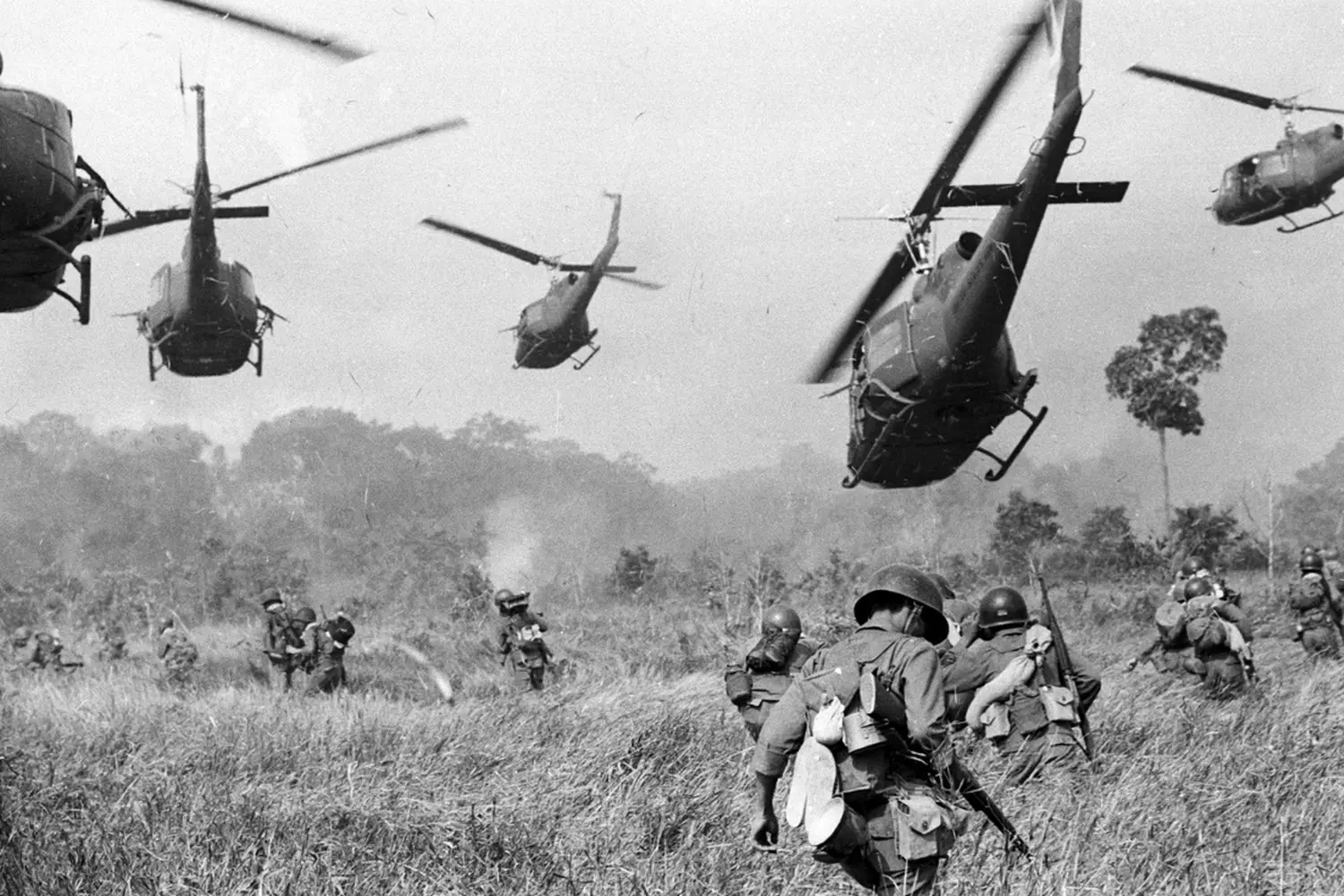
Arsenal of a Superpower: The Weaponry of the U.S. Army
The U.S. Army is not just soldiers — it’s a complex system of technology, weapons, and equipment that makes it one of the most powerful military forces in the world. American weaponry combines traditional systems, cutting-edge innovations, and strategic future developments. Here’s an overview of how U.S. soldiers, the Air Force, Navy, and special forces are equipped.
- 01. Army: Ground Combat Power
The U.S. Army is equipped with a wide array of combat systems, from small arms to armored vehicles and artillery.
- Small Arms
The standard rifle is the M4, which replaced the iconic M16. Pistols M17 and M18 provide personal defense for officers and special forces. - Armored Vehicles
M1 Abrams tanks are among the most powerful globally, featuring 120mm cannons, advanced protection systems, and high-precision electronics. - Artillery and Missiles
Multiple launch rocket systems like HIMARS, howitzers M777, and portable anti-tank systems allow strikes at targets dozens of kilometers away. - Soldier Protection
Modern Kevlar body armor, helmets with night vision, and integrated communications systems keep troops mobile and safe.
- 02. Air Force: Air Supremacy
The U.S. Air Force is a key instrument for territorial control and global influence.
- Fighters and Bombers
F-22 and F-35 ensure air superiority, while strategic bombers B-2 and B-52 can strike targets thousands of kilometers away. - Unmanned Systems
Drones like MQ-9 Reaper and RQ-4 Global Hawk conduct reconnaissance, surveillance, and precision strikes without endangering pilots. - Support and Transport
Aircraft C-17 and KC-135 provide logistics, air refueling, and rapid troop movement.
- 03. Navy: Power at Sea
The U.S. Navy is the symbol of global presence and mobility.
- Aircraft Carriers
11 active carriers of the Nimitz and Gerald R. Ford classes can project force anywhere, carrying over 70 aircraft each. - Submarines
Ohio-class ballistic nuclear submarines carry nuclear warheads, while Virginia-class attack subs conduct reconnaissance and stealth strikes. - Destroyers and Cruisers
Equipped with Tomahawk missile systems and Aegis air defense systems.
- 04. Special Forces and Specialized Systems
Elite units like Navy SEALs and Delta Force use mission-specific equipment:
- Small Arms
High-precision carbines, pistols, and sniper rifles. - Flexible Mobility
Light boats, transport helicopters, and off-road vehicles for covert operations. - Cutting-Edge Technology
Thermal imaging, night vision, miniature reconnaissance drones. SEALs often use weapons customized for specific missions, from silenced pistols to long-range rifles.
The Army of the Future: Technology and Innovation
The modern U.S. Army is a high-tech system integrating human capabilities, artificial intelligence, cyberspace, and unmanned technologies. It’s not only about strength but also about innovations that redefine warfare.
- 01. Drones: A New Era of Air Warfare
Drones have transformed reconnaissance, surveillance, and combat operations over the past two decades.
- MQ-1 Predator
Used for reconnaissance and target designation, capable of staying aloft for hours while transmitting live intelligence. - MQ-9 Reaper
Armed drone for precision strikes, enabling operations thousands of kilometers from bases without risking human pilots.
- 02. Cyber Forces: Warfare in the Virtual Space
Modern conflicts extend beyond the physical battlefield.
- Protecting Critical Infrastructure
Power grids, communication systems, transport, and defense networks are shielded from cyberattacks. - Offensive Operations
Cyberweapons neutralize threats without traditional combat. - Intelligence and Data Analysis
AI systems analyze vast datasets to detect threats before they materialize, predicting enemy actions through historical patterns.
- 03. Future Army: Exoskeletons, AI, and Hypersonic Weapons
The U.S. is preparing for a future where technology will be decisive.
- Exoskeletons
Enhance soldiers’ physical capabilities, allowing heavy loads without losing mobility or endurance. - Artificial Intelligence
Assists in controlling drones, analyzing intelligence, and strategic planning based on massive data sets. - Hypersonic Weapons
Missiles exceeding Mach 5, impossible to intercept with current air defense systems. - Laser and Energy Systems
Neutralize drones, missiles, and artillery instantly with high precision. Autonomous robotic combat systems are already in testing, operating in coordination with human soldiers.
Why do technologies change the army?
- Reduced human losses
Robots and drones handle the most dangerous tasks. - Rapid response
New systems enable instant reaction to threats, globally if needed. - Increased efficiency
AI, drones, and cyber forces make operations precise and minimize mistakes. - Flexibility and mobility
Smaller human footprint, exponential growth in operational capability.
Today, the U.S. Army is not just about strength — it is intelligence, innovation, and technology, capable of operating at all levels: from local conflicts to global strategic operations.
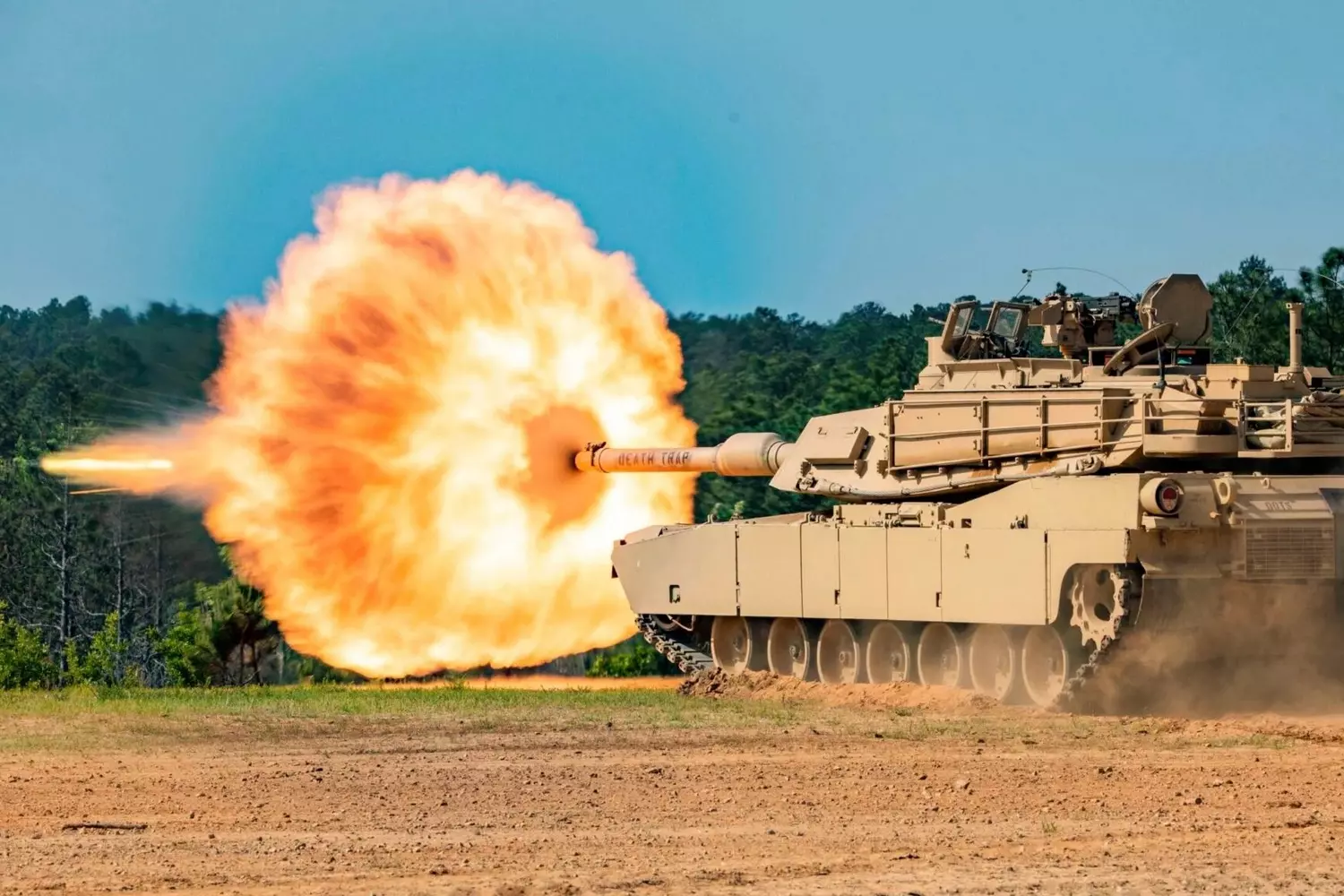
The U.S. Army Through the Eyes of Society: Pride, Criticism, and National Identity
The U.S. Army is not just about equipment, weapons, and operations — it’s deeply woven into American culture, history, and national consciousness. For many Americans, military service symbolizes honor, courage, and patriotism. Yet alongside pride, there is criticism, making public perception complex and multifaceted.
- 01. Proud Tradition and Respect for Service Members
Americans traditionally take pride in their military personnel. Symbols of this pride include:
- Parades and Ceremonies
Independence Day parades and military ceremonies showcase equipment, uniforms, and marching soldiers, fostering unity and patriotism. - Monuments and Museums
From Arlington National Cemetery to the World War II Museum in New York, these sites honor sacrifices and heroism. - Veteran Benefits
Free healthcare, educational programs, and store discounts provide social support and recognition of service. - Film and Literature
Movies like “Saving Private Ryan” and “Top Gun”, along with special forces series, create an image of a strong and heroic army, shaping perceptions of younger generations. Over 70% of Americans view military service as prestigious, and nearly one in five has served or has family members who did.
- 02. Criticism and Controversy
However, public opinion is not uniform. Some Americans raise concerns about the military:
- Overseas Conflicts
Wars in Afghanistan, Iraq, and Syria dragged on, causing casualties and financial strain. - Budgetary Spending
Over $850 billion annually — more than the combined budgets of many nations — sparks debates on government priorities. - Moral and Ethical Questions
Use of drones, secret missions, and special forces operations sometimes draw criticism and media scrutiny. Despite this, most Americans maintain respect for soldiers, distinguishing their service from government policy.
- 03. The Army as Part of American Identity
The U.S. military is not only a foreign policy tool but also an element of the “American Dream”. For many, service offers social mobility, education, career growth, and personal development.
- Career Opportunities
From enlisted soldier to special forces officer, the military provides pathways to develop unique skills. - Social Integration
Service unites people from different states, ethnicities, and cultures, fostering a sense of community and patriotism. - Cultural Influence
The military inspires music, film, literature, and art, shaping the image of a strong, organized nation. Army traditions and symbols frequently appear in fashion, games, and sports — from uniforms to logos and emblems.
In American society, the military represents both heroes and a state instrument. It fosters patriotism, offers career and educational opportunities, yet also raises questions about spending and ethics. Regardless, the U.S. Army remains a core part of national identity — a cultural symbol of strength, responsibility, and collective memory.
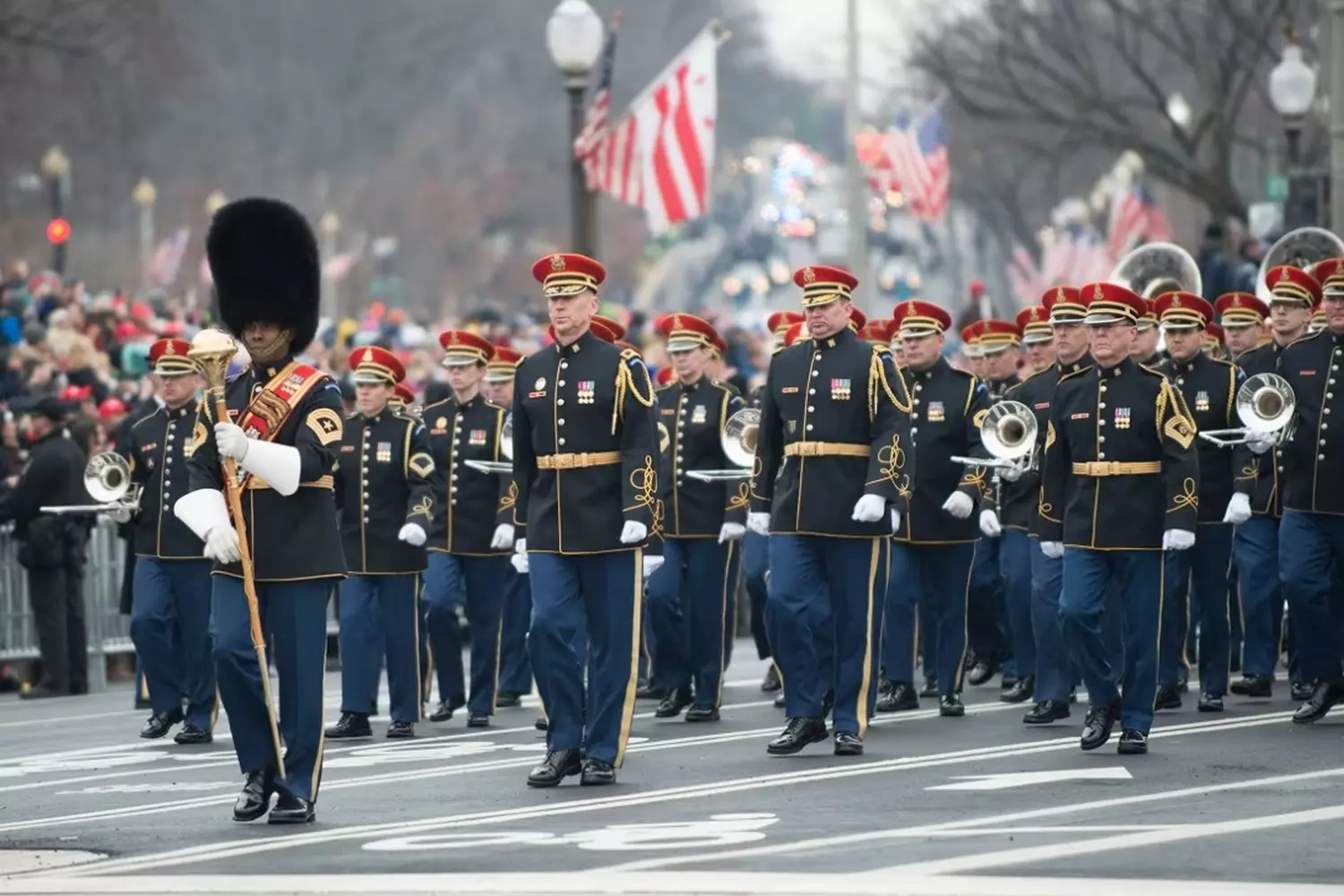
Military History at Your Fingertips: U.S. Army–Related Landmarks
America’s rich military history is preserved in numerous monuments, museums, and memorials, offering visitors a tangible connection to the country’s armed forces. Tourists and history enthusiasts alike can witness firsthand the equipment, technology, and heroic deeds that shaped both the nation and the world.
- 01. Museums and Exhibits
- U.S. Army National Museum, Fort Belvoir, Virginia
Dedicated to the Army’s history from colonial times to modern operations, with over 30,000 artifacts, including weapons, uniforms, tanks, and artillery. Interactive exhibits and multimedia installations allow visitors to experience military operations, with special sections highlighting 20th-century wars and modern special operations. - U.S. Navy Museum, Virginia Beach, Virginia
Explores the history of the Navy, aircraft carriers, and naval aviation. Exhibits include planes, boats, helicopters, and submarines. Flight simulators let visitors experience landing on an aircraft carrier. The “Marine Corps History” section covers Pacific Theater battles and special forces operations. - National Military Memorial and Arlington National Cemetery, Virginia
A place of remembrance for soldiers who gave their lives. Features the Changing of the Guard at the Tomb of the Unknown Soldier and memorials for World War II, the Korean War, Vietnam, and modern conflicts — a reflective space for history and tribute. - National Air and Space Museum, Washington, D.C.
While focused on space, the museum includes a large military aviation section featuring strategic bombers like the B-52, fighters such as the F-22, and historic WWII aircraft, along with exhibits on military technology and defense industry developments.
- 02. Fort McGregor, Texas
Displays and reconstructed 19th-century Army encampments and buildings. Themed tours demonstrate period weapons, gear, and living conditions. - 03. Outdoor Monuments and Memorials
- World War II Memorial, Washington, D.C.
Architecture and sculptures honor soldiers’ bravery on all fronts. Inscribed names, a memory fountain, and colonnades create a solemn atmosphere of respect and reflection. - Vietnam Veterans Memorial, Washington, D.C.
The iconic black wall lists over 58,000 fallen soldiers, serving as a gathering place for veterans and visitors and as an educational and cultural landmark.
- 04. Interactive and Unique Experiences
- Air Shows and Equipment Demonstrations
Regularly held across the U.S., featuring the Air Force, naval aviation, and drones. Visitors can witness military technology in action and appreciate the scale and capability of American forces.
Fun Fact: At the U.S. Army National Museum, visitors can try on full combat gear to feel the weight of a soldier’s equipment — almost like being in a real operation.
These attractions offer a unique opportunity to experience the heroism, history, and technological advancement of the U.S. military. Visiting museums, memorials, and bases provides a tangible connection to America’s armed forces and their role in shaping the nation and the world.
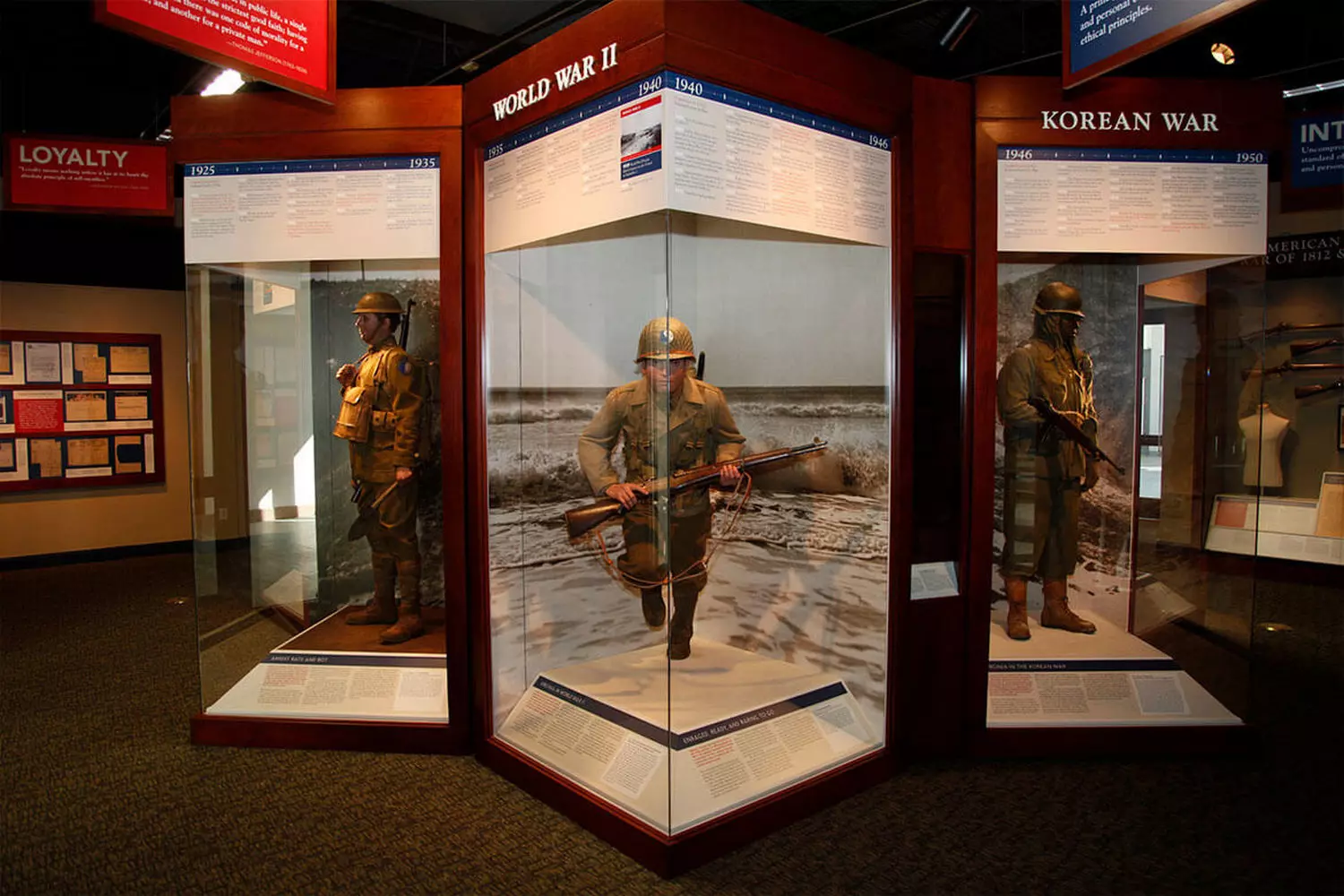
Incredible Facts About the U.S. Army That Are Hard to Believe
We are used to seeing the U.S. Army in Hollywood blockbusters: cutting-edge technology, perfect training, and global presence. But behind the glossy façade lies a world of surprising paradoxes, quirky traditions, and facts that impress the imagination more than any fiction. Ready to find out what skeletons are hidden in the Pentagon’s armored closets?
- 01. An army that (officially) doesn’t exist
Have you heard of the “Green Berets” or “Navy SEALs”? But do you know about the “Psychological Operations Group (POG)”? This is the only unit in the world whose existence the U.S. government officially neither confirms nor denies. Its mission is to wage information warfare and influence the minds of the enemy and the population. Their work is so secret that they are true “ghost soldiers,” even within the army itself. - 02. A “bulletproof vest” for… iPhone
The U.S. Army spends huge amounts not only on tanks but also on gadget accessories. There is a special contract for the production of shockproof, waterproof, and hack-proof cases for smartphones and tablets. In modern warfare, data is no less important than ammunition, and a soldier must stay connected under any conditions — even if his phone falls off an armored vehicle. - 03. Space Force — not the first
Everyone thinks the U.S. Space Force, created in 2019, is something absolutely new. But few remember that the first “space troops” of the U.S. already existed back in the 1980s! The Air Force Space Command was already conducting orbital operations. So Trump didn’t create them from scratch but rather spun them off into a separate branch, which made the story scandalously popular. - 04. The most unusual military base
Where do they train soldiers for urban warfare? Not on an ordinary range, but in a “ghost town” inside the U.S. itself. Fort Irwin in California includes a realistic mock-up of a city with houses, streets, a factory, and even mannequin corpses. Urban battles are rehearsed here, with the “population” consisting only of soldiers and mock “terrorists.” It’s the most realistic apocalypse simulator. - 05. Its own judicial system with its own laws
The U.S. Army has an autonomous judicial system based on the Uniform Code of Military Justice (UCMJ). It criminalizes actions unthinkable under civilian law: for example, desertion, cowardice in battle, or disgraceful surrender. For some of these crimes, the death penalty is still formally prescribed, although it was last applied in 1961. - 06. Super-quiet Velcro for special forces
A special “silent” Velcro was developed for special forces, which is 95% quieter than standard. This allows soldiers to open bags and attach gear silently during night operations. - 07. Coca-Cola officers in World War II
During World War II, Coca-Cola president Robert Woodruff declared that every American soldier should be able to buy a bottle of the drink for 5 cents. To make this happen, the army introduced positions of officers responsible for Coca-Cola supplies and availability at the front. - 08. Creators of the iconic Ray-Ban glasses
The famous “aviator” model was created by Bausch & Lomb at the request of U.S. Air Force General John MacCready. He wanted glasses that fit snugly, protected from glare, and reduced pilots’ headaches. Thus, a global bestseller was born. - 09. $177 billion for private military companies
More than half of the personnel deployed by the U.S. in Iraq and Afghanistan after 2003 were employees of private military companies (PMCs). Since 2001, the army has spent $177 billion on contracts with them. - 10. Parachuting specialist dogs
The army employs about 500 specially trained dogs. They undergo 16 hours of training per month and pass quarterly exams. Some even parachute with special forces teams to carry out reconnaissance and sabotage missions. - 11. The first submarine was used back in the War of Independence
In 1776, an attempt was made to attack the British fleet using the “Turtle” submarine, operated manually. The attack failed, but it was one of the first cases of combat use of underwater craft. - 12. Swastika as a former Native American symbol
Before the Nazis came to power in Germany, the 45th Infantry Brigade of the U.S. Army used the swastika to honor Native American culture, where it was a sacred symbol. In the 1930s, it was replaced with a stylized thunderbird. - 13. The first robotic mule of 1968
In 1968, the first walking robot “Sam” entered service — a huge machine weighing over a ton, designed to carry loads. It was extremely clumsy and poorly obeyed the operator, so the project was quickly shut down. - 14. Women soldiers of the 18th century: disguising as men to serve
Before the Civil War, women in the U.S. could not officially serve in the army. Some (like Deborah Sampson) cut their hair, changed their name, and pretended to be men to fight. Sampson served for 17 months, was wounded, and her gender was revealed only in the hospital. - 15. 150 kg of batteries for a platoon for a 3-day mission
A modern platoon of 30 soldiers requires more than 150 kg of batteries to power all standard equipment during a three-day mission. - 16. Sailors’ bell-bottom trousers
Flared pants in the U.S. Navy are not a tribute to the 1970s fashion. They were worn back in the 19th century: the wide legs were convenient to roll up when working in water or on a wet deck. - 17. 1700 PlayStations for a supercomputer
In 2010, the Pentagon bought 1700 PlayStation 3 consoles to build a supercomputer. This turned out cheaper than using traditional server components. - 18. 5 billion liters of fuel per year
The U.S. Army consumes about 5 billion liters of fuel annually. In 2011, one soldier on average used 100 liters per day — 20 times more than during World War II. - 19. Career guidance system: from farmer to hero
Many famous American war heroes (like Sergeant Alvin York) came from rural backgrounds and applied hunting and survival skills they had gained in civilian life while serving in the army.
This selection shows that the U.S. Army is a complex institution where technological innovations and global ambitions coexist with historical curiosities and ethical dilemmas.
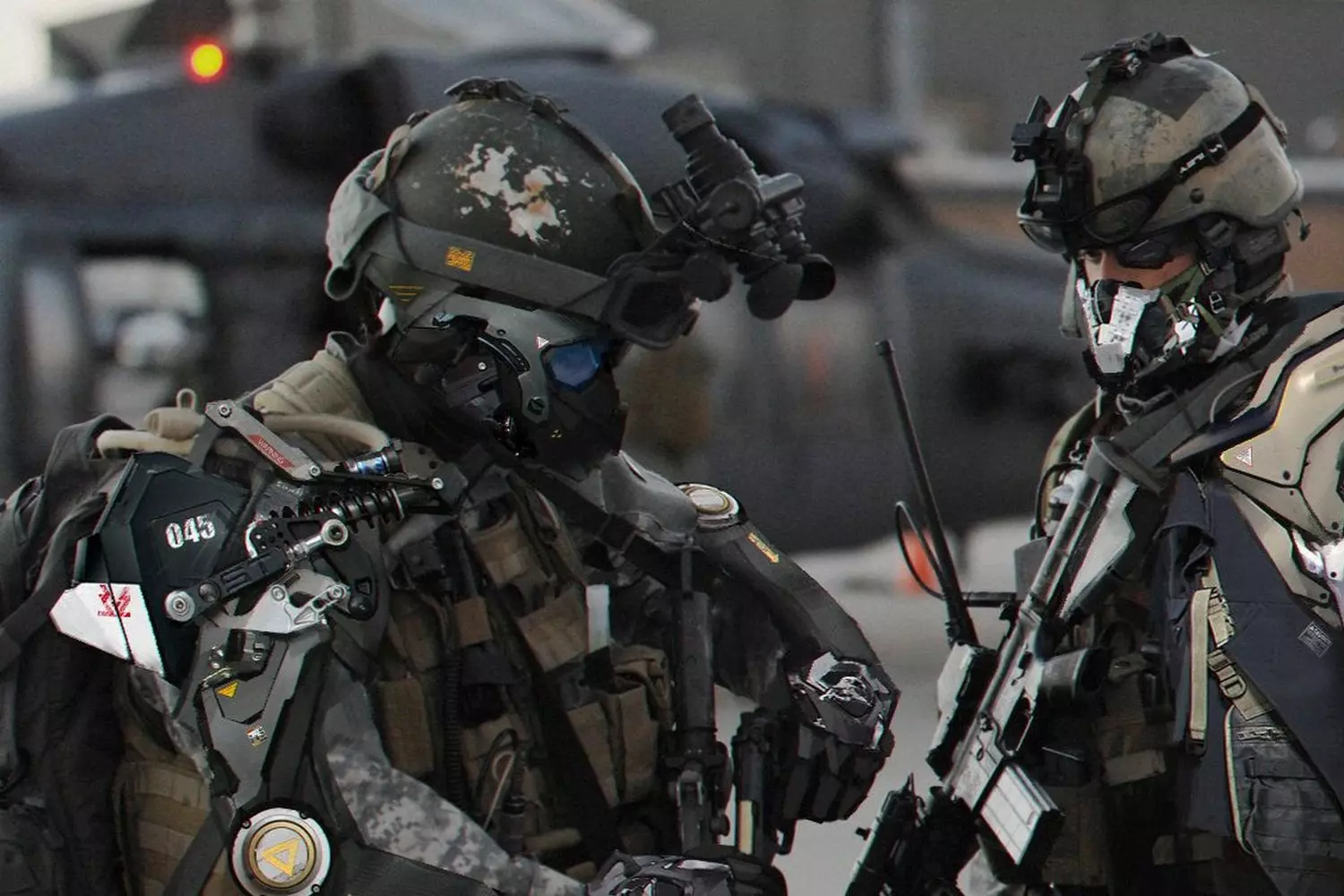
The U.S. Army as a Reflection of the Nation with American Butler
The U.S. Army is not just an armed force. It is a living organism that shapes the nation’s image, influences global politics, and serves as a symbol of strength, courage, and patriotism for millions of people. From the first militiamen of the Revolutionary War to today’s Space Force, its history is filled with heroism, innovation, and unique events that reflect the character of the American nation.
Want to see it all with your own eyes? American Butler will help you organize tours of the most significant military museums, memorials, and historic bases in the U.S. You will visit:
- National military museums and memorials in Washington, including Arlington Cemetery;
- Legendary bases and forts, from Fort Belvoir to aircraft carriers and submarines;
- Exhibitions of modern weaponry, technology, and historical arsenals;
- Interactive displays and airshows, where you can see military equipment in action.
With American Butler, you’ll get not just a tour, but a full immersion into U.S. military history: engaging, safe, and comfortable. Your personal guide will share stories you won’t find in textbooks and take you to places that shape true American identity.














